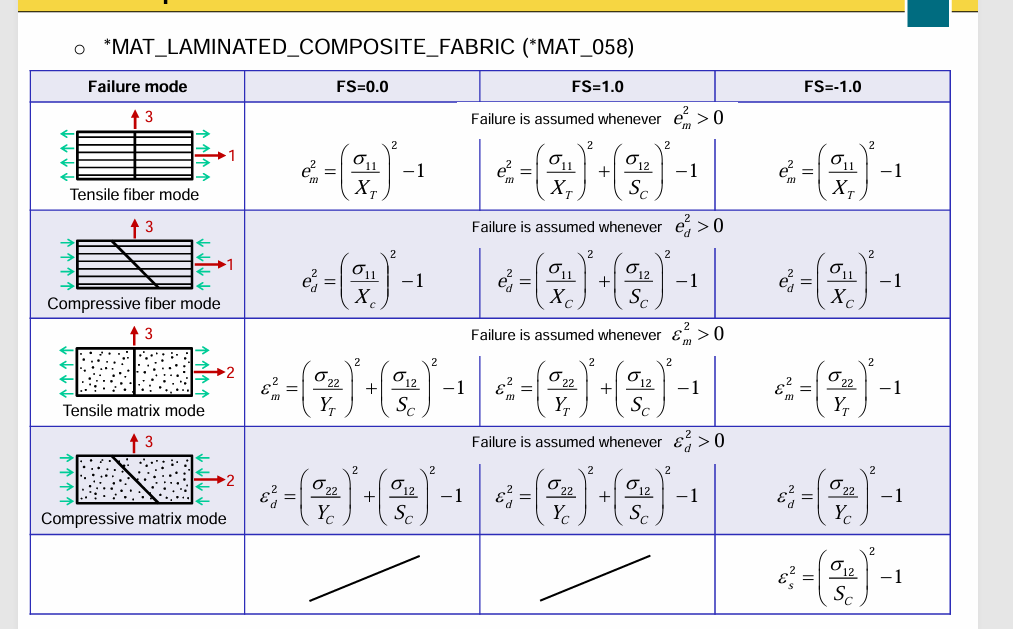-
-
May 25, 2025 at 3:18 pm
1617836513
SubscriberWhat are the criteria for element failure in this material model? If one of the pictures 1 or 2 is satisfied, will the element be deleted? Or do need to meet both criteria at the same time? Is the deletion of the element only related to the stress strength and ERODS entered in the material card? But ERODS is evaluated against a scalar strain computed from the two in-plane normal strains and the in-plane shear strain. Suppose I enter an ERODS of 0.5, will the unit be deleted when the ERODS value calculated by the formula in Figure 3 reaches 0.5?
-
June 5, 2025 at 5:59 am
igandiko
Ansys EmployeeAs per the manual, ERODS is defined as maximum effective strain for element layer failure. A value of 1 means 100% strain. Note that there are two ways of using ERODS flag. In either case, if effective strain at an integration point exceeds |ERODS|, that integration point fails and ceases to carry stress. The element is not deleted until all integration points have failed.
For ERODS > 0, the “effective strain” is a scalar strain computed from the two in-plane normal strains and the in-plane shear strain:
scalar strain = 2/sqrt(3) * sqrt[ 3*((eps1+eps2)/2)^2 + ((eps1-eps2)/2)^2 + eps4^2 ]
where
eps1 = history variable 10
eps2 = history variable 11
eps4 = history variable 12 = engineering (not tensorial) shear strain
The scalar strain itself is available in hisv#15. History variable 8 holds the failure flag.For ERODS < 0, effective strain is calculated as
effstn =sqrt(2.0*(s5*s5+s6*s6+d3tot(i)*d3tot(i))/3.0)
s5, s6 depend on strains in local 1 (d1tot), 2 (d2tot) direction, and d4tot (engineering, not tensorial, in-plane shear strain). d3tot is strain in local direction 3.
d1tot, d2tot, d3tot are available as history variables 10,11, and 16, respectively. d4tot can be written as history variable 12.
-
- 您必须登录才能回复此主题。



-
4512
-
1494
-
1386
-
1209
-
1021

© 2025 Copyright ANSYS, Inc. All rights reserved.











